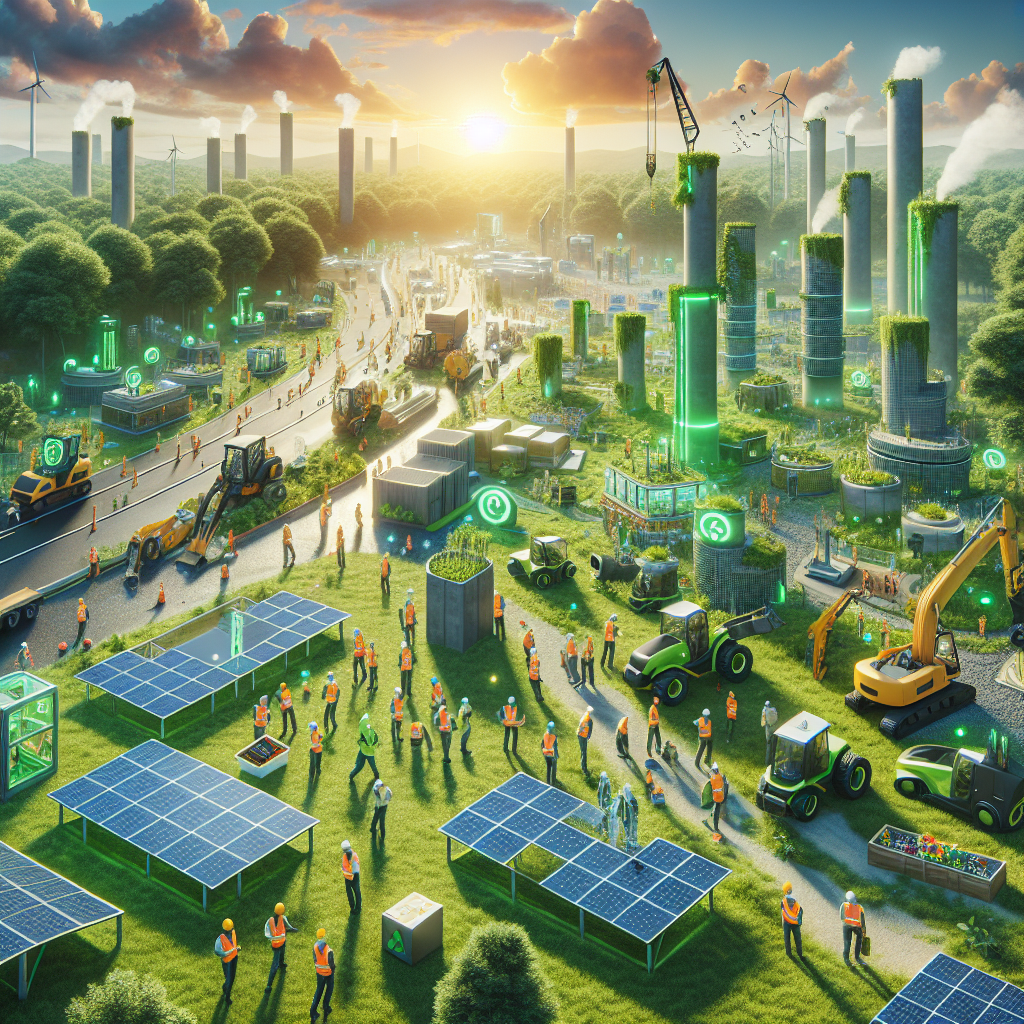Building a Greener Future: The Rise of Sustainable Construction Practices
In recent years, the construction industry has seen a significant shift towards sustainability. The traditional building practices, which once dominated the industry, are gradually being replaced by more eco-friendly and sustainable methods. This change is driven by a growing awareness of environmental issues, including climate change, resource depletion, and environmental degradation. Sustainable construction practices aim to address these concerns by minimizing the environmental impact of buildings and promoting a more responsible approach to construction. This article explores the rise of sustainable construction practices and how they are paving the way for a greener future.
The Foundations of Sustainable Construction
Sustainable construction focuses on reducing the environmental footprint of buildings while enhancing their efficiency and longevity. This is achieved through the careful selection of materials, efficient use of resources, and incorporation of renewable energy sources. The key principles of sustainable construction include energy efficiency, water conservation, reducing waste, and improving indoor environmental quality.
Materials and Methods
One of the primary aspects of sustainable construction is the use of eco-friendly materials. These materials are selected based on their lifecycle assessments, which evaluate the environmental impact from production to disposal. Sustainable materials often include recycled content, renewable resources, and locally sourced products to reduce transportation emissions.
In addition to material selection, sustainable construction practices also emphasize efficient design and construction methods. This includes optimizing building orientation to take advantage of natural light and heat, implementing green roofs and walls to improve insulation and reduce urban heat island effect, and utilizing low-impact construction techniques to minimize disruption to the surrounding environment.
The Role of Technology
Technological advancements have played a crucial role in the rise of sustainable construction. Innovations such as building information modeling (BIM) allow for more precise and efficient planning, reducing waste and improving the overall sustainability of projects. Similarly, advancements in renewable energy technologies, such as solar panels and wind turbines, have made it more feasible for buildings to generate their own clean energy.
Certification Systems and Standards
To promote and ensure sustainability in construction, various certification systems and standards have been developed. These include LEED (Leadership in Energy and Environmental Design), BREEAM (Building Research Establishment Environmental Assessment Method), and WELL, which focus on different aspects of sustainability, such as energy efficiency, water use, and health and well-being. These certifications provide a framework for assessing and recognizing sustainable construction practices, encouraging more builders and developers to adopt greener methods.
The Benefits of Sustainable Construction
The benefits of sustainable construction extend beyond environmental protection. Sustainable buildings typically have lower operating costs due to their energy and water efficiency, providing long-term savings for owners and occupants. Additionally, these buildings often offer a healthier and more comfortable living environment, which can lead to increased productivity and well-being. Furthermore, sustainable construction practices can enhance a building’s resilience to climate change impacts, making communities more sustainable in the long term.
The Challenges Ahead
Despite the growing adoption of sustainable construction practices, challenges remain. High upfront costs and a lack of awareness or expertise can hinder the implementation of sustainable methods. Moreover, inconsistent regulations and standards across regions can create confusion and barriers to adoption. However, as technology advances and more success stories emerge, these challenges are gradually being overcome.
The Future of Sustainable Construction
The future of sustainable construction looks promising, with ongoing innovations and a growing commitment from governments and industries worldwide. As more stakeholders recognize the importance of sustainability, we can expect to see further advancements and wider adoption of sustainable construction practices, leading to a greener and more sustainable future.
FAQs
Q1: What makes a building sustainable?
A1: A sustainable building is designed and constructed to minimize its environmental impact. This involves efficient use of energy and water, use of sustainable materials, reducing waste, and improving indoor environmental quality.
Q2: Are sustainable buildings more expensive?
A2: While the initial cost may be higher, sustainable buildings often lead to significant savings in operating costs over their lifespan due to reduced energy and water usage.
Q3: How do certifications like LEED and BREEAM work?
A3: These certifications assess buildings based on various sustainability criteria, including energy efficiency, water use, and materials. Buildings that meet certain standards are awarded certifications, which can range from basic certification to platinum levels, indicating higher sustainability.
Q4: Can old buildings be made sustainable?
A4: Yes, retrofitting old buildings with energy-efficient systems, better insulation, and sustainable materials can significantly improve their sustainability.
Q5: How does sustainable construction contribute to fighting climate change?
A5: Sustainable construction reduces greenhouse gas emissions through energy efficiency, use of renewable energy, and sustainable materials. This helps mitigate the impact of construction on climate change.
The rise of sustainable construction practices represents a positive step towards addressing some of the most pressing environmental challenges of our time. By embracing eco-friendly materials, efficient designs, and renewable energy, the construction industry can significantly contribute to building a greener and more sustainable future.

